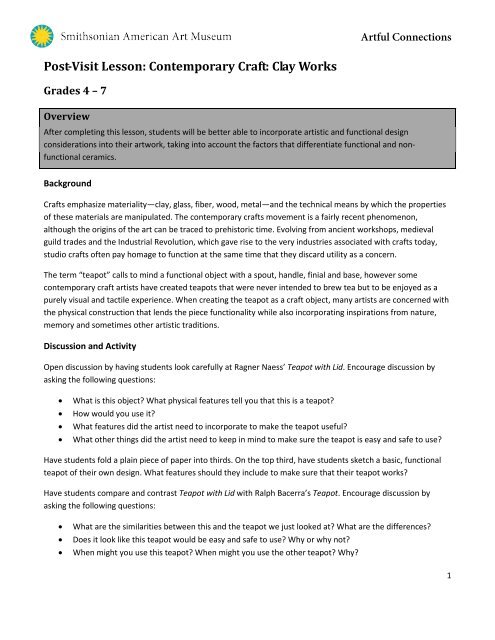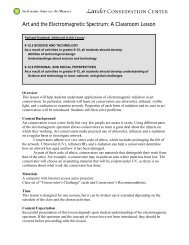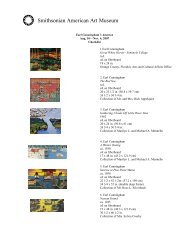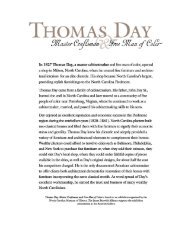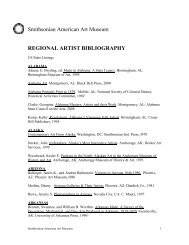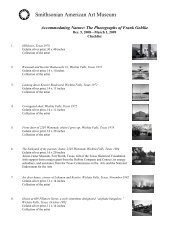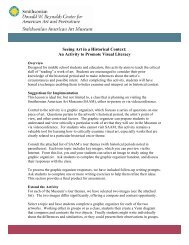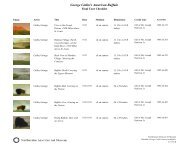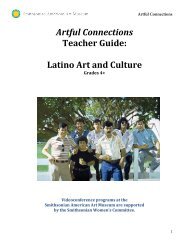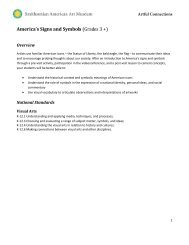Contemporary Craft: Clay Works - Smithsonian American Art ...
Contemporary Craft: Clay Works - Smithsonian American Art ...
Contemporary Craft: Clay Works - Smithsonian American Art ...
You also want an ePaper? Increase the reach of your titles
YUMPU automatically turns print PDFs into web optimized ePapers that Google loves.
<strong>Art</strong>ful Connections<br />
Post-Visit Lesson: <strong>Contemporary</strong> <strong>Craft</strong>: <strong>Clay</strong> <strong>Works</strong><br />
Grades 4 – 7<br />
Overview<br />
After completing this lesson, students will be better able to incorporate artistic and functional design<br />
considerations into their artwork, taking into account the factors that differentiate functional and nonfunctional<br />
ceramics.<br />
Background<br />
<strong>Craft</strong>s emphasize materiality—clay, glass, fiber, wood, metal—and the technical means by which the properties<br />
of these materials are manipulated. The contemporary crafts movement is a fairly recent phenomenon,<br />
although the origins of the art can be traced to prehistoric time. Evolving from ancient workshops, medieval<br />
guild trades and the Industrial Revolution, which gave rise to the very industries associated with crafts today,<br />
studio crafts often pay homage to function at the same time that they discard utility as a concern.<br />
The term “teapot” calls to mind a functional object with a spout, handle, finial and base, however some<br />
contemporary craft artists have created teapots that were never intended to brew tea but to be enjoyed as a<br />
purely visual and tactile experience. When creating the teapot as a craft object, many artists are concerned with<br />
the physical construction that lends the piece functionality while also incorporating inspirations from nature,<br />
memory and sometimes other artistic traditions.<br />
Discussion and Activity<br />
Open discussion by having students look carefully at Ragner Naess’ Teapot with Lid. Encourage discussion by<br />
asking the following questions:<br />
• What is this object? What physical features tell you that this is a teapot?<br />
• How would you use it?<br />
• What features did the artist need to incorporate to make the teapot useful?<br />
• What other things did the artist need to keep in mind to make sure the teapot is easy and safe to use?<br />
Have students fold a plain piece of paper into thirds. On the top third, have students sketch a basic, functional<br />
teapot of their own design. What features should they include to make sure that their teapot works?<br />
Have students compare and contrast Teapot with Lid with Ralph Bacerra’s Teapot. Encourage discussion by<br />
asking the following questions:<br />
• What are the similarities between this and the teapot we just looked at? What are the differences?<br />
• Does it look like this teapot would be easy and safe to use? Why or why not?<br />
• When might you use this teapot? When might you use the other teapot? Why?<br />
1


